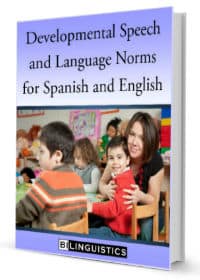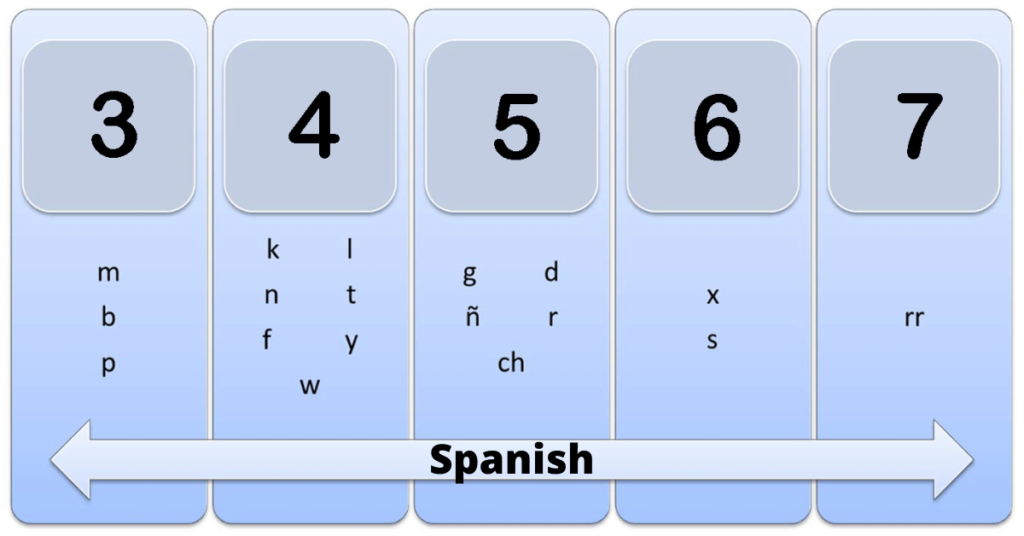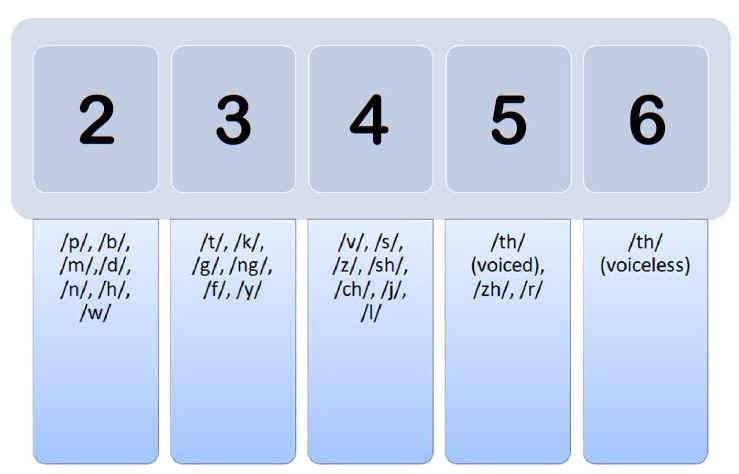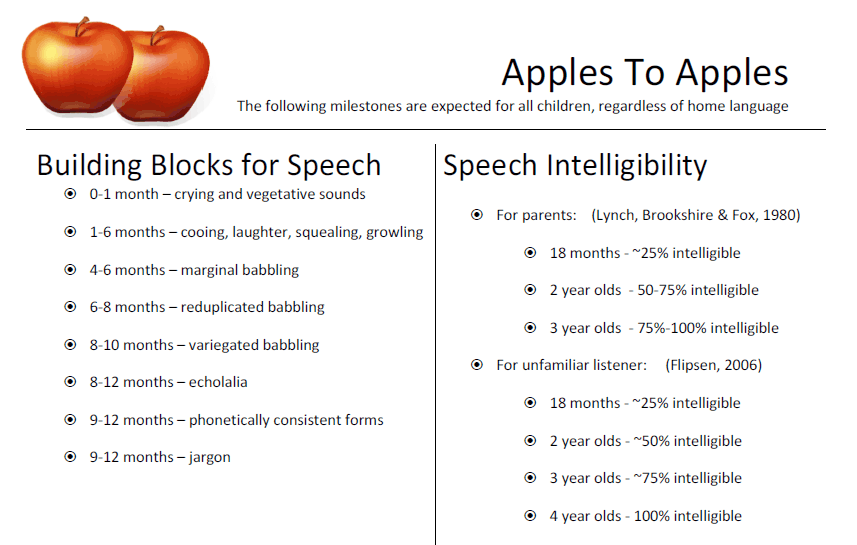
On the average week, we get contacted for articulation norms in Spanish and English more than any other request. We decided to include our favorite documents in a single post so that they could be easily bookmarked and referenced.
Developmental Articulation Norms for Spanish and English
The following two charts are consolidations of sounds divided by age of acquisition. Note that these sounds have been rated at 90% mastery. We also want to admit that there is a love-hate relationship with these types of charts. The haters point out that development varies so widely, that no child should be held to the standards of a single-sound test, and that they misconstrue “development” because they are a snapshot and do not relate to intelligibility. The lovers find that this is the easiest way to convey information to non-speechies (teachers and parents) and it points us in the right general direction when we are first trying to figure out how big of a problem we have on our hands. We are neutral on their use. An extremely intriguing take-away are that sounds are not acquired in both languages at the same time!
Spanish Articulation Chart

English Articulation Chart

Intelligibility Articulation Norms for Spanish and English
Regardless of home language, there are a few speech milestones that are true of any language. Here are two charts that we have developed that are a quick reference for early developmental milestones and intelligibility.




these resources are great. I am so glad I have had time this summer to peruse through this website. There is great information. (Obviously I am a school based SLP, finally finding time to do more professional development. ) I have already shared this website link with my speech pathology department in my district.
What norms do you know for Spanish speakers when it comes to correctly producing multi-syllabic words.
In the literature that we have, multi-syllabic productions aren’t specifically addressed which makes sense because it is not too exact. For example, does multi- mean 3,4,5,or 6 syllables. On the other hand, weak-syllable deletion would be suppressed by age 3 in Spanish (Goldstein) and 4 in English (Shriberg). I read that as multi-syllabic words being produced without error after 4. Check out the ebook linked in this post. It has a ton of great info if you work with diverse children.
What norms do you have for cluster reduction or final consonant deletion? Thank you! Such a helpful resource!
Hi Amy,
Phonological processes exist in both Spanish and English but have different age expectations. Check out the ebook linked in the image at the top of the post (https://bilinguistics.com/catalog/products/developmental-speech-language-norms-spanish-english/). If you have it already, check out the chart on page 18 and the research study on the following page. Thank you! Scott
I have been trying to figure out how to incorporate the results of the study below when analyzing phonetic inventories of bilingual students. What are your thoughts on using norms from specific studies on specific language like those mentioned in Jimenez (1987) and Acevedo (1993) vs. the article below which looked at consonant acquisition overall? I hope this makes sense.
Children’s Consonant Acquisition in 27 Languages: A Cross-Linguistic ReviewSharynne McLeod and Kathryn Crowe
Hi Aja,
You have cited to of our field’s best researchers (IMO). They take good work that has been done and show how it can be relevant to us on the ground. Here is my interpretation of it.
1. Your experience as an SLP has value. What you know about English or any language you deal with, is very similar to other languages. All of us are capable of looking up the sounds of a foreign language and figuring out if a child is missing sounds in English because they don’t exist in his home language.
2. Most sounds are in for all students by age 5. I read this as: if you have an unintelligible child (to parents and you) at age 5+, it’s a big problem.
3. Consonant inventories are useful, but phonology may be where the action is if we are dealing with intelligibility.
Per your specific question, we are very lucky to have the information that we do on Spanish. We do need to try to pull in anything we can find about other languages. We are in the process of trying to compile available information and I can tell you it is hard and needs some diligence. This study let’s us know that sound development is not as “foreign” as it would seem. There is a pattern of acquisition that many languages share.
Is the /r/ shared between Spanish and English? I do not see the alveolar tap or alveolar trill as separate with the different phonetic symbols. I learned about the differences recently. I could be wrong but I don’t know think Spanish has the palatial liquid denoted by IPA /r/